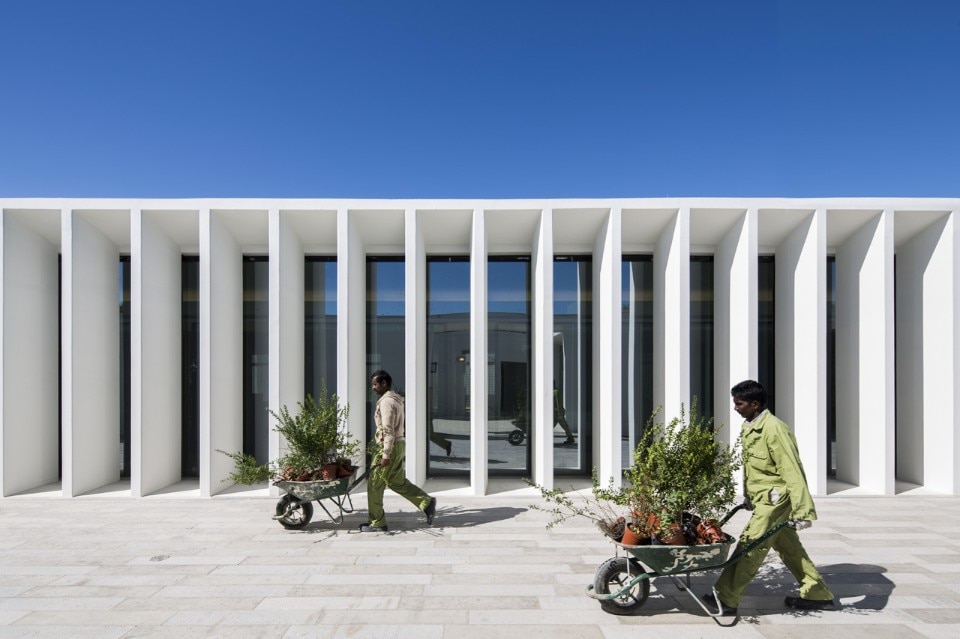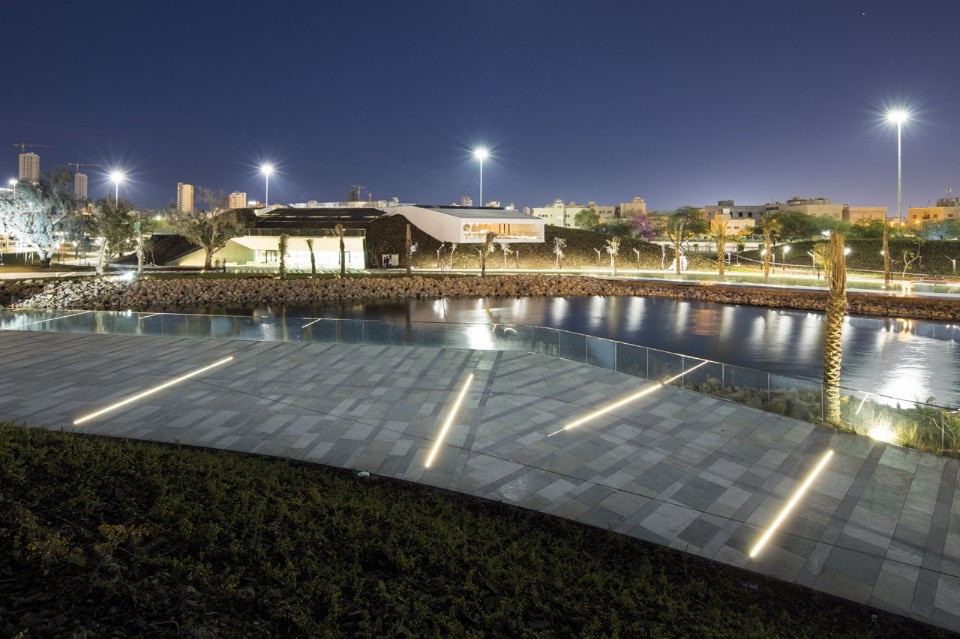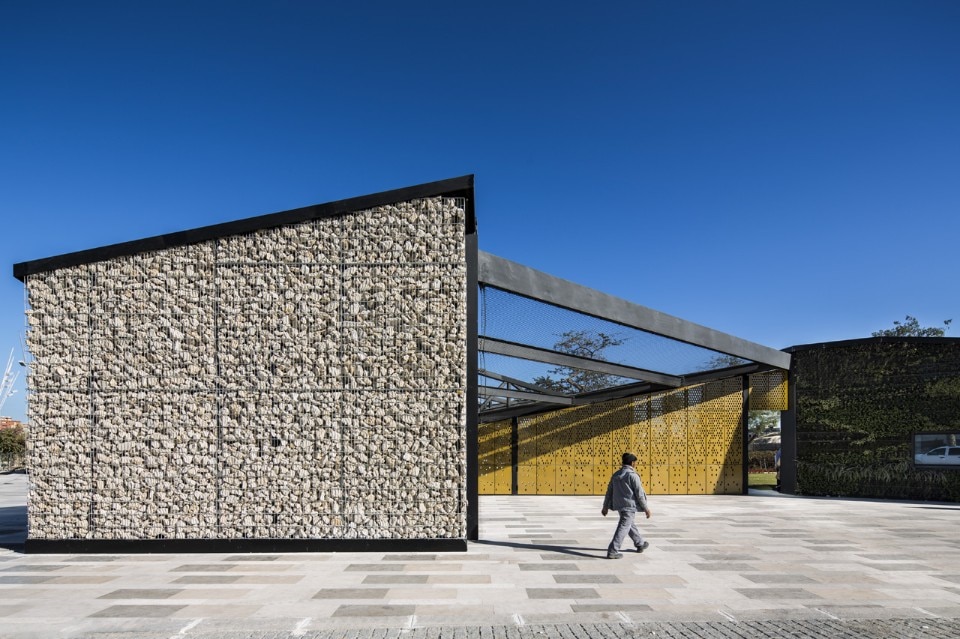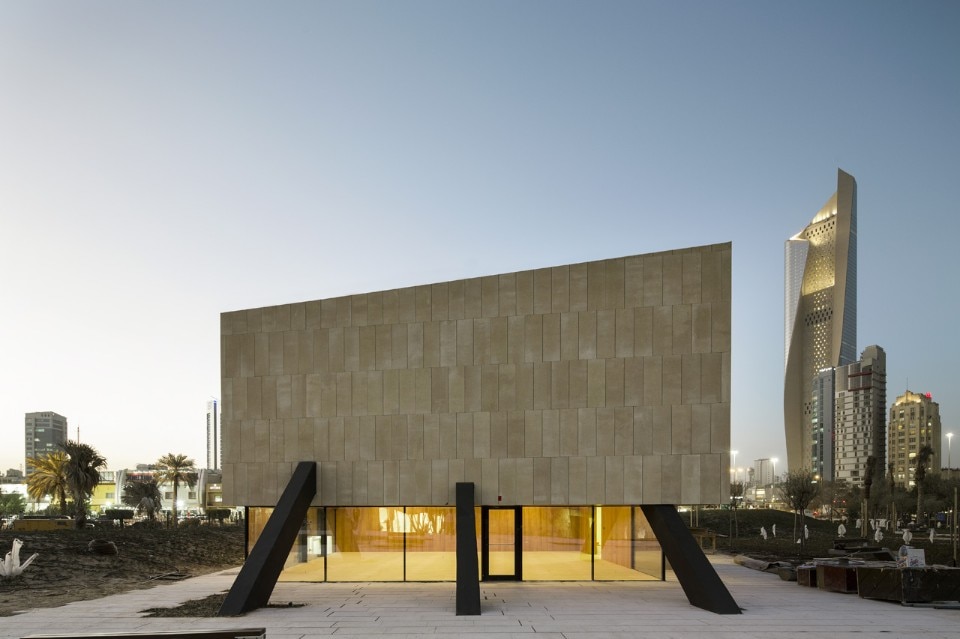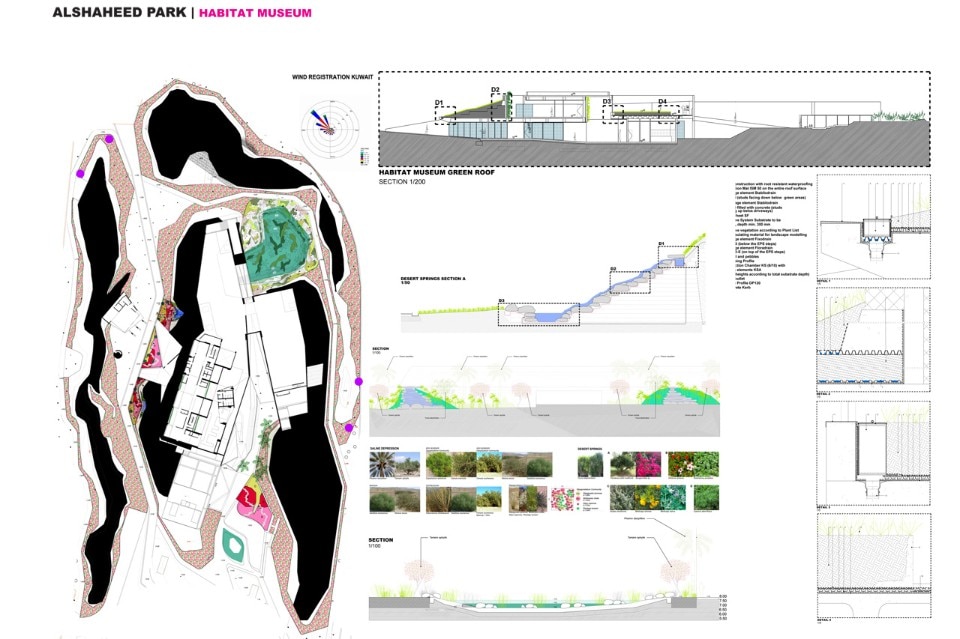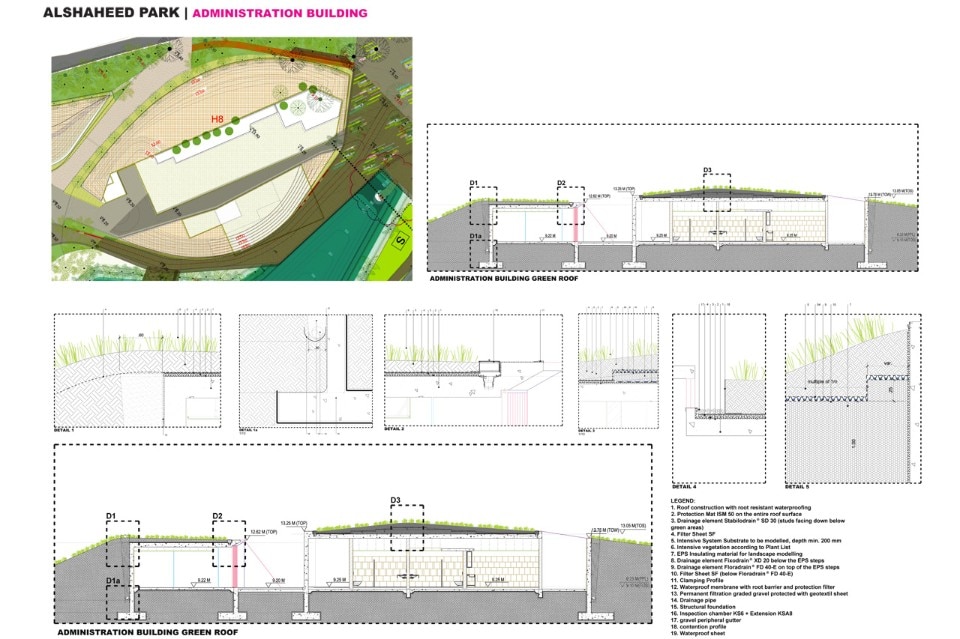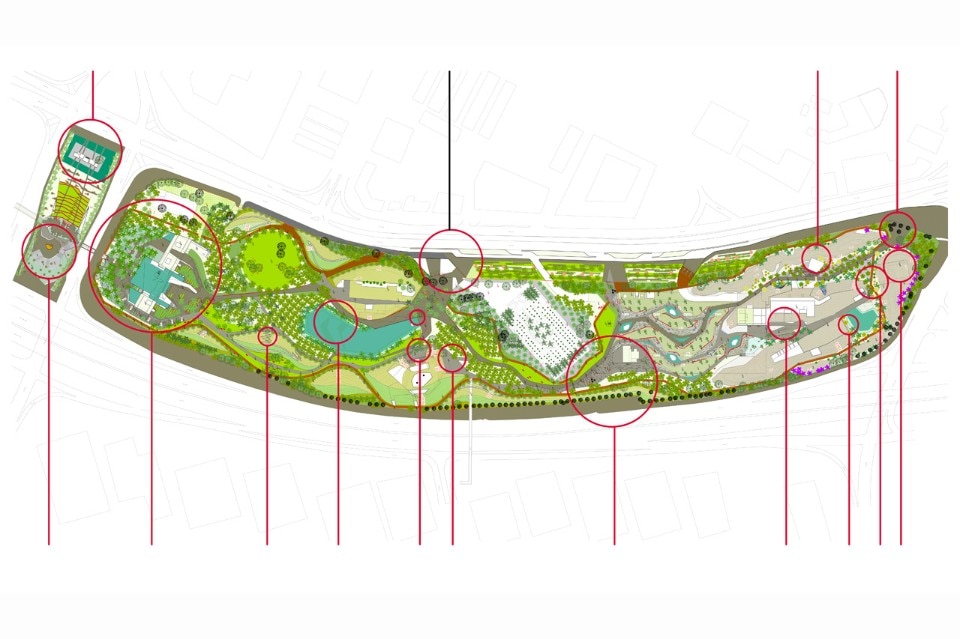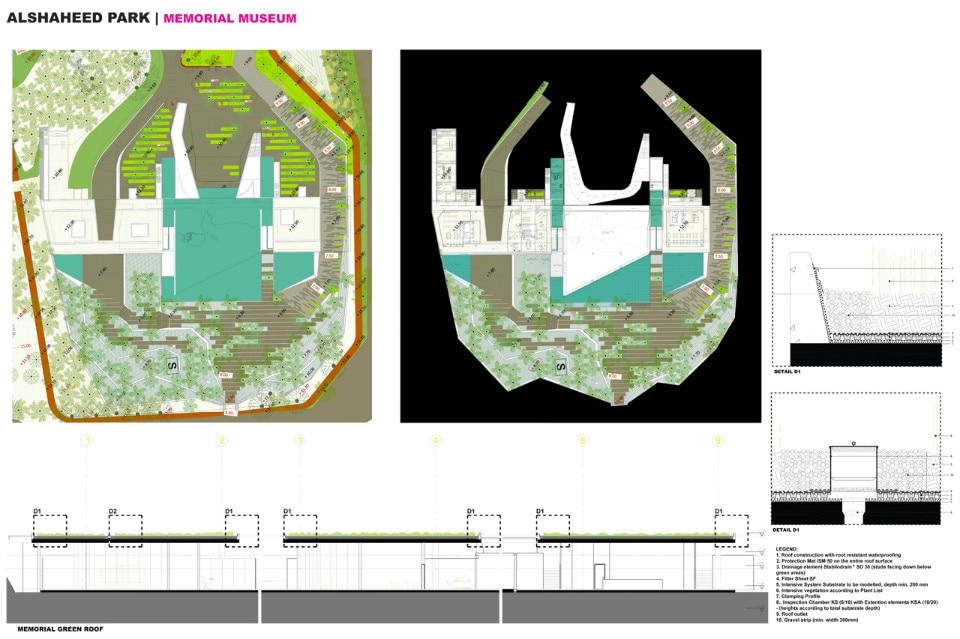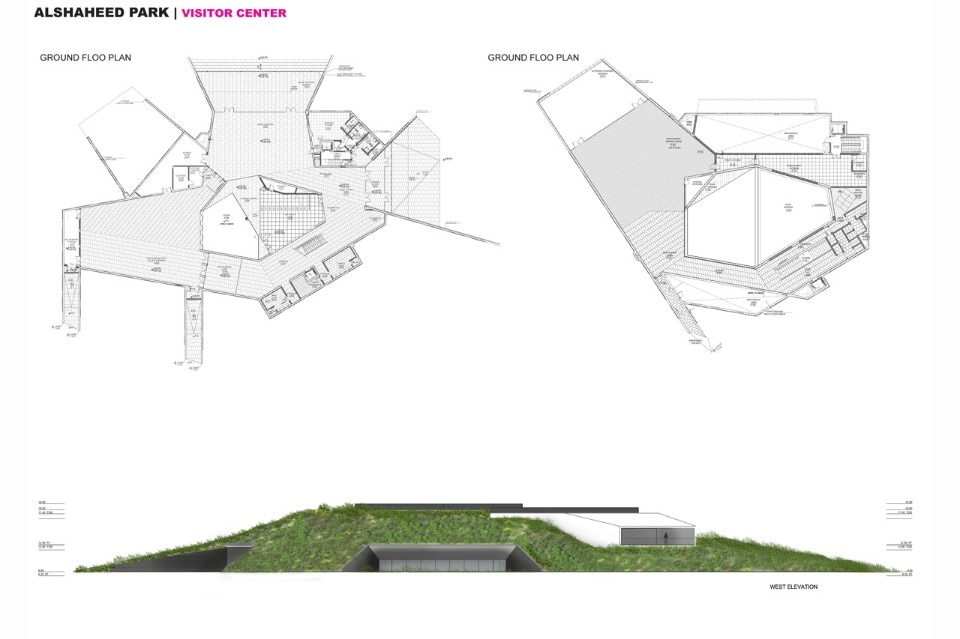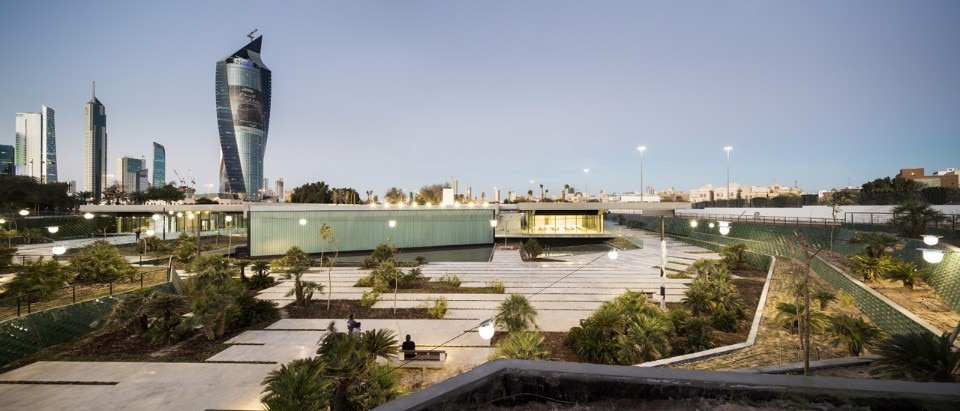
The selected project was developed by an international team lead by Ricardo Camacho and StroopLandscape with local firm TAEP, and completed in the record time of 22 months. The project weaved the programme seamlessly and consistently around a number of difficult constraints, such as the pre-existing vegetation to be preserved, the dense network of underground services and regulations, which prevented the erection of new structures in the Green Belt.
Moreover, the project was guided by an instrumental understanding of Alison and Peter Smithson’s proposal for the same area, presented in the late 1960s but never implemented.
The result is a series of geometrical dunes which mould the landscape, identify the areas by theme and incorporate the buildings. The dunes are also agents of environmental mitigation linked to the site’s noise problem (caused by its proximity to major roads), the prevalent wind, dust and solar exposure.
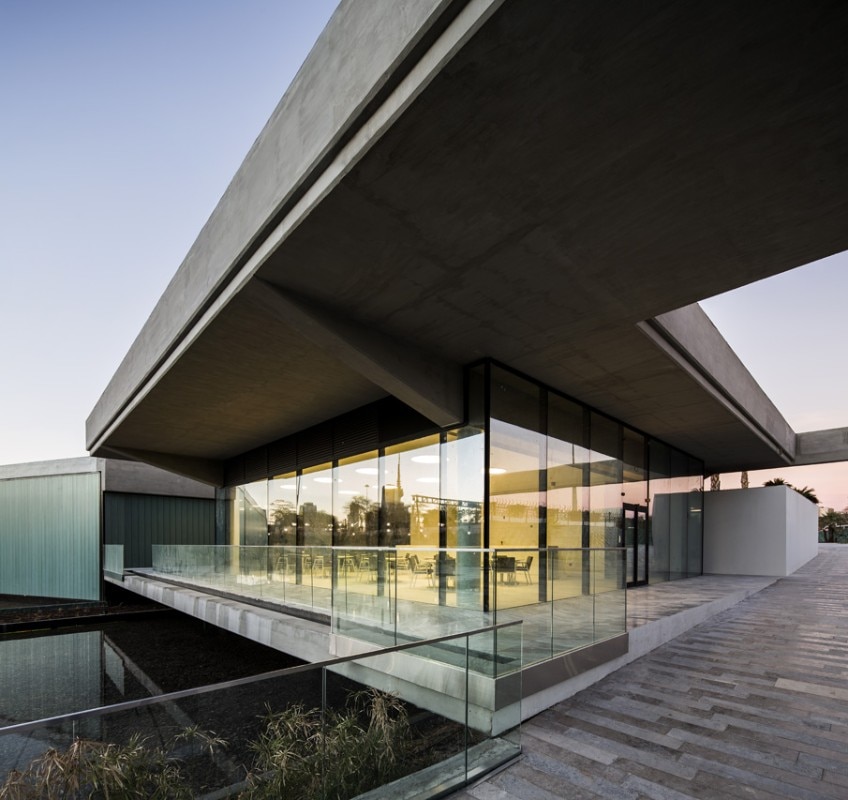
An artificial lake sits in the centre of the composition. Not only a landscape feature, this also provides a reservoir ensuring the park has a water supply in the hot season. Three main paths branch off from the lake, intersect the dunes and connect different spaces and functions: the celebration (or Amir’s) path; the jogging track and the visitor path. Each one is clearly distinguished by different paving.
All the architecture is underground, introverted and hidden below 35,000 square metres of green cover, specifically designed for a desert environment with the extensive use of native plants. Only on rare occasions do the buildings open onto the public spaces revealing façades in which glass is always reduced to a minimum and shaded.
The Habitat Museum, at the east end of the park, is a progressive immersion into the local topography. The dunes reflect Kuwait’s diverse environmental features, from desert plateau to southern oasis, including saline depressions and acacia woodland. The building contains an exhibition hall, library, offices, cafeteria, bookshop and a children’s learning centre. At the opposite end, the Memorial Museum commemorates Kuwait’s martyrs. It is a complex building articulated on various levels with offices, research centre, cafeteria and main exhibition hall, which has large glass roof featuring a large glass lens and water.
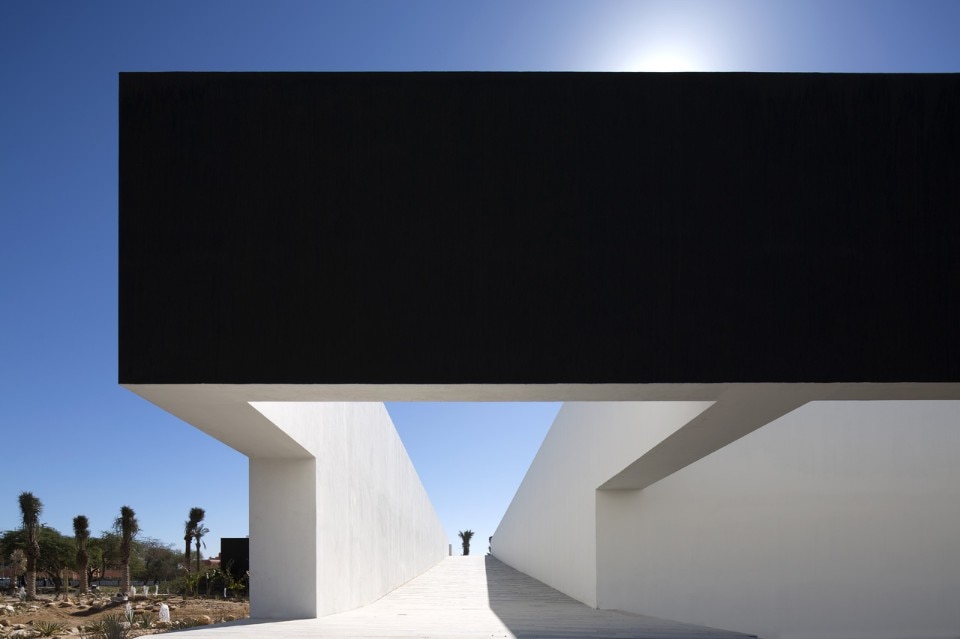
The museum is also hidden from view by a layer of vegetation. The main entrance is at a lower level, leading to the galleries and farther on to a sunken plaza, well below street-level. This allowed the creation of an underpass to a nearby site, where a restored old city gate stands. The drop is compensated by an outdoor auditorium and a series of rampart gardens covered with tiles in a 3D pattern.
Centrally located between the two museums, the main park entrance is a stone gabion gate leading directly to the lake, which acts as pivotal point and main area of national celebration. The Visitor Centre and Administration Headquarters face this area. Both buildings, although different in shape are different interpretations of the traditional courtyard type.
Despite its severe climate, Kuwait is not new to ambitious environmental upgrading projects.
The Water Front Project, involving approximately 14 kilometres of seafront, with walkways and leisure buildings and completed in 1988 by Ghazi Sultan, KEO and Sasaki Associates is perhaps the most successful attempt at design on an urban scale in Kuwait. Shaheed Park embodies the same spirit: it is not a natural park, which would have been too far removed from local tradition. It is a geometric garden that balances lawn and stone surfaces as well as recreational areas and specific functions linked to the nearby urban centre. It is a direct response to the growing need for outdoor places for social gatherings, for public spaces that are a better and more appropriate alternative to business galleries and shopping malls.
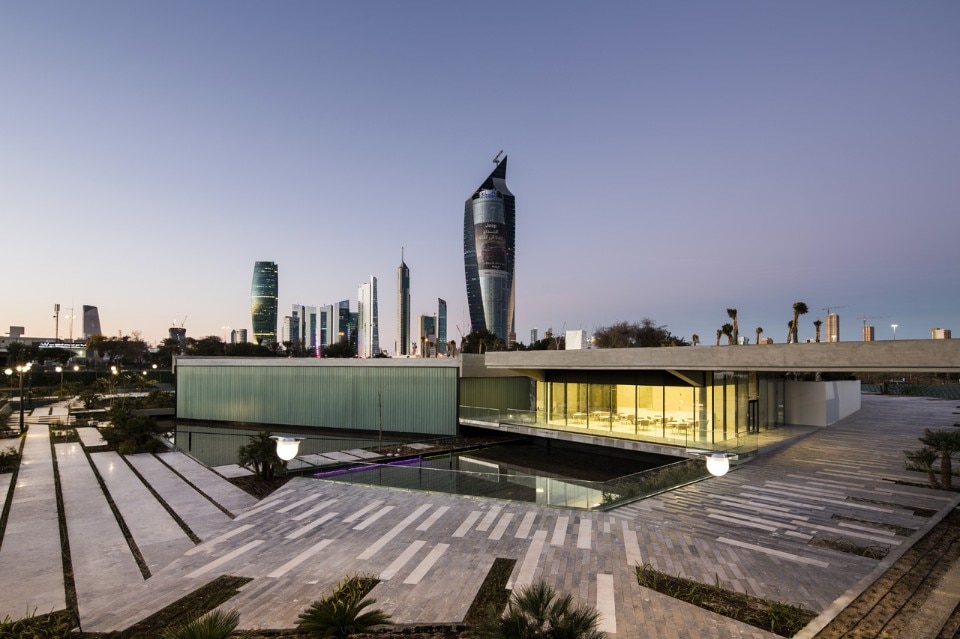
Al Shaheed Park, Kuwait City, Kuwait
Program: urban and landscape architecture
Lead Designers: Ricardo Camacho (architettura), Sara Machado (paesaggio)
Lead Consultant: The Associated Engineering Partnership (TAEP)
Landscape Consultants: Stroop | landscape urbanism
Interior Design: Sara Saragoca
Design Team Collaborators: Frederico Barosa, Sarah Behbehani, Abdulaziz Al Khandari, Rita Tadi, Fernando Martins, Nuno Sequeira, Hugo Ferreira, Graca Vaz, Miguel Costa, Yousef Abdulaal.
Structural Design: Al Farooqi Engineering Consultants Bureau, R5 Engenharia
Mep Design: Kharafi National, Eng. Magdy Mohamed (MEP Design Coordination)
Irrigation Design: Geodesenho, Eng. Pedro Nobre Correia
Civil Landscape: ProGolf, Eng. Benjamim Silva
Acoustics And Thermal: Psicometro
External Lighting: Atelier33 Architectural Lighting Design Beirut
Facade Designer: Alico Projects Department
Green Roof Design: ZinCo GmbH
Identity And Project Communication: Ze Pedro Font Amado (Wang Design)
Environmental Consultant: Fahed Shuaibi (Amiri Diwan Consultant)
Project Construction Manager: Kharafi National, Eng. Jacob Kurian
Completion: 2014


